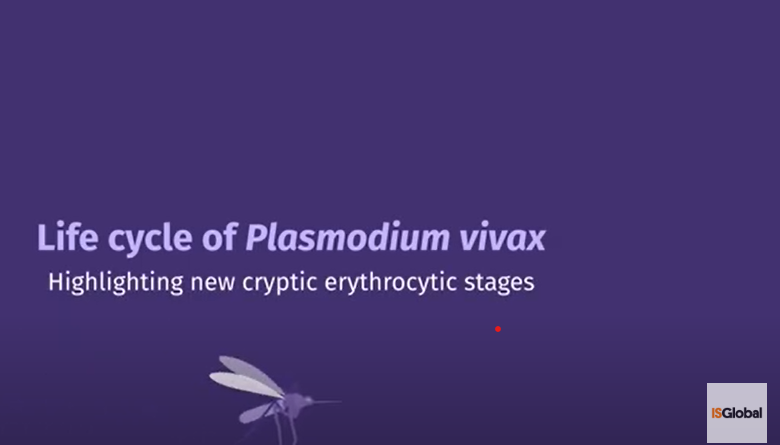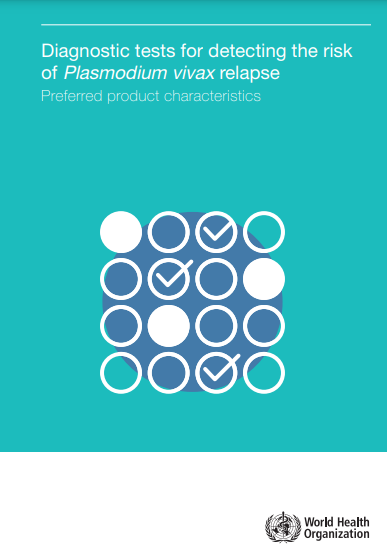8th Virtual International Conference on Plasmodium vivax Research (ICPvR) – 2022: Day 1
Tuesday, 5th April 2022
Published: 05/04/2022
This report is brought to you by the MESA Correspondents Melina Florez-Cuadros, Varun Gorki, Neha Sylvia Walter, and Duru Vincent Chiagozie. Senior editorial support has been facilitated by the Organizers and Chairs of the sessions.
THEMES: THEMES: Basic Science | Epidemiology | Health Systems | P. vivax
MESA Correspondents bring you cutting-edge coverage from the virtual 8th International Conference on Plasmodium vivax Research (ICPvR 2022)
Day 1: Tuesday, 5th April 2022
Welcome & Opening Lectures
The organizers of the conference, Kamala Ley-Thriemer (Menzies School of Health Research, Australia) and Leanne Robinson (Burnet Institute, Australia), opened the 8th International Conference on Plasmodium vivax Research (ICPvR) by welcoming the attendees. They greeted over 300 delegates from 37 countries across the globe and energized them to gain the latest insights on P. vivax research from 17 distinguished experts on the latest developments in P. vivax. The organizers advocated for using the Spatial Chat to make connections, gather information, ask questions, and interact with eminent speakers.
Prof. Jetsumon Sattabongkot Prachumsri and Prof. Isaac Quaye delivered keynote remarks on the first day of the conference, which was chaired by Wai-Hong Tham and Ric Price.
By providing insight into the conference’s history, Jetsumon (Sattabongkot) Prachumsri (Mahidol Vivax Research Unit, Thailand) illustrated the current models employed for Plasmodium vivax research and the challenges undermining different models. She first mentioned a major challenge identified 20 years ago – the development of a method to continuously culture in vitro P. vivax blood stages. Therefore, an alternative was proposed to use infected blood as media growth for long term culture. Prachumsri highlighted the advances and challenges that P. vivax research faces from mosquito rearing and feeding to the replication of the human liver stage in humanized mice and the controlled human malaria infection (CHMI). The majority of the current models have great challenges since they depend on having a good supply of infected blood (which is not easy to find in non-endemic countries), a stable colony of vectors and sufficient hepatocyte donors. These models are very expensive and require very specific protocols. She concluded her talk by summarizing the key stages of P. vivax, the need to improve the current tools and the urgent need for collaboration to develop better models for malaria research. She finished by encouraging young researchers to fill the research gaps already identified.
Issac Quaye (Regent University College of Science and Technology, Ghana) initiated his talk by introducing the Pan African Vivax and Ovale Network (PAVON) established in 2019 in 14 Sub-Saharan African countries with its headquarters in Accra, Ghana. PAVON collaborates with National Malaria Control Programs (NMCPs) on diagnosis, surveillance and education of malaria. Quaye then highlighted the role of asymptomatic infection in the rising burden of P. vivax in Africa. He cited the case study of Botswana from 2008 to 2012, where P. vivax elimination is impeded by microscopy competence, lack of appropriate equipment, availability of the tools and inadequacy of trained personnel. PAVON has played a crucial role in ameliorating these concerns including: going back to basics, finding new tools to combat P. vivax above current strategies tailored to P. falciparum, NMCPs routine engagement with local researchers, and training of graduates to drive human capacity building. Finally, he mentioned that the way forward would include devising innovative strategies to tackle asymptomatic P. vivax spread in the region.
Session 1: Global burden and epidemiology of vivax malaria
Abdisalan Noor (World Health Organization – WHO, Geneva) initiated his talk by presenting the WHO methods for estimating global malaria cases, and mortality with a focus on P. vivax. The three methods for estimating cases include: data as reported without adjustment (which only contributes a very small proportion of information), or the adjusted reported data for testing, reporting and treatment rates and the 3rd method which generates the bulk of data comes from the Bayesian model that converts parasite prevalence to incidence. He also highlighted the major challenges to WHO estimation of the global burden of P. vivax and the possible solutions targeted at ameliorating these challenges.
J. Kevin Baird (Eijkman Oxford Clinical Research Unit, Indonesia) explained how P. vivax infection diagnostic techniques rely on blood for demonstrating parasite presence, but contrastingly, most of P.vivax biomass is not necessarily in that tissue. It has been shown that people can have acute and chronic malaria without parasitemia, making us rethink new diagnostic methods and techniques that take into account the bulk of P. vivax biomass existing in CD71+ enriched extravascular niches. Those being hidden in extravascular compartments may be more common than we think. Baird left his talk with a valuable question: Is P. vivax malaria infection in Africa improbably rare or benign?
Somya Mehra (University of Melbourne, Australia) presented a mathematical model for P. vivax transmission that considers the particular hypnozoite stage of the parasite, along with multiple blood stage infection and immunity acquisition. Her model also accounts for three sources of stochasticity: stochasticity in dormancy, variability in the number of relapses from each bite and the randomness in mosquito bites. Their sensitivity analyses show how hypnozoite dormancy dynamics impact transmission, for instance. Their model provides useful insights into the epidemiology of P. vivax.
Liony Fransisca (Menzies School of Health Research, Australia) and colleagues reported how health systems strengthening under the Strengthening Health Systems for Effective Primaquine (SHEPPI) project in Papua, Indonesia, shows how simple pragmatic interventions and health system strengthening are feasible and crucial for P. vivax elimination in the area. Through the established “malaria corner” the project was able to provide better surveillance data, timely automated report of cases, improved quality of care and ultimately reduced recurrence and incidence of P. vivax in the region, despite certain limitations.
Rapid Fire Presentation – Global burden and epidemiology of vivax malaria
#100 Daniel Villela (Oswaldo Cruz Foundation, Brazil) commenced his talk by highlighting the increasing proportion of P. vivax cases in recent years that accounts for more than 80% of the total in the area. The Poisson model was used and they found differences in expected vs actual malaria cases in several cities. Results showed the increase to be multifactorial, where deforestation, imported cases, agricultural activities, and mining were the main drivers.
#102 G. Dennis Shanks (Australian Defence Force Malaria and Infectious Disease Institute, Australia) initiated his talk by stating P. vivax malaria was extensively prevalent on the Thai Burma Railway. 56% of smears taken from war prisoners were positive with 26% remaining positive, months later. Relapses were likely a result of sub-optimal treatment, high infection rates and activation of hypnozoites.
#103 Anaclara Pincelli (University of Sao Paulo, Brazil) stated that prolonged breastfeeding was found to be a predictor of decreased risk-blood stage P. vivax infection for the first two years of life. Researchers used serology to measure the cumulative exposure to P. vivax in infants. They concluded that most of P. vivax infections in children remain undiagnosed in the Brazilian Amazon and prolonged breastfeeding partially prevented the P. vivax infections.
#104 Gustavo da Silva (University of Notre Dame, United States) and colleagues tried to understand how travelling for work was related to the malaria peak at the end of each year in the Ethiopian Highland. Travel was a risk factor for infection for both, P. falciparum and P. vivax, although the majority of infections were for non-travelers.
#105 Caroline Jasmine Abanto Alvarez (Cayetano Heredia University, Peru) pointed out that asymptomatic infection contributes up to 80% of the community-wide malaria transmission in Peru. Results showed that experiencing a recurrence with parasite homologous to the ones present in the initial infection and being children between 6 and 15 years were factors associated with experiencing an asymptomatic recurrence.
#106 Ayleen Alicia Kosasih (Universitas Indonesia, Indonesia) presented her study that measured the detectability of gametocytes in untreated P. vivax infections during a series of mass blood surveys (MBS). The study results showed marked fluctuations of parasites and gametocytes in the population and suggested new strategies other than MBS for detection and removal of infection reservoirs.
#107 Angelica Vigil (Institute of Tropical Diseases – National University Toribio Rodriguez of Mendoza, Peru) stated that in order to describe the situation of malaria in the Amazonas region and determine significant changes in malaria P. vivax incidence through time in relation to changes in malaria control policies, the study analyzed the P. vivax database reported by the Regional Directorate of Health Amazonas between 2005 and 2020. The results showed changes in malaria cases through time and the need for a sustained malaria control program that could lead to malaria elimination in the region.
Rapid Fire Presentation – Pathology and Pathogenesis of vivax malaria
#109 Katherine Torres (Cayetano Heredia University, Peru) illustrated the significant role of plasma interleukins and chemokines found in asymptomatic malaria infections: IL-9, IP-10, MIP-b, PDGF-bb and RANTES with a clinical trial performed in Peru. She concluded that the alteration among such cellular immune responses led to immunopathogenesis.
#110 Aditi Arya (Indian Council of Medical Research and National Institut of Malaria Research – ICMR/NIMR, India) a research scholar, explained the association of thrombocytopenia in P. vivax infected patients with Pvmsp3α gene. She urged that the severity of the account of P. vivax malaria must be elaborated at a molecular and clinical level.
#111 Iris Aparici-Herraiz (Barcelona Institut for Global Health – ISGlobal, Spain) in collaboration with other institutes, emphasized the importance of developing humanized mouse models (Splenic/Bone Marrow) for examining the effect of extracellular vesicles as intercellular communicators in the bone marrow and spleen during P. vivax malaria with supported observations.
#112 Alberto Ayllon-Hermida a PhD student (Barcelona Institut for Global Health – ISGlobal, Spain) presented the work explaining the use of CRISPR-Cas9 technology to generate transgenic lines of P. falciparum which will express the specific genes of P. vivax, which favors the parasite to thrive in the environment of bone marrow and spleen.
Session 2: Pathology and Pathogenesis of vivax malaria
Steven Kho (Menzies School of Health Research, Australia) commenced his talk by explaining the basics of spleen biology. He presented a cohort study from 2015 to 2017, carried out at Rumah-Sakit-Umum-Daerah (RSUD) hospital, Indonesia with 22 splenectomy cases with no malaria symptoms at the time of surgery. Interestingly, spleen tissue in 95% of the patients showed asymptomatic Plasmodium infections (7 P. vivax,13 P. falciparum, and 1 mixed infection), confirmed by microscopy and PCR. Further, the study also found that P. vivax parasites and immature reticulocytes accumulated in the same splenic compartment. These observations suggested that the spleen harbors a cryptic endosplenic lifecycle in chronic P. vivax infection and the need to look for biomarkers of hidden parasite biomass in the spleen, where we can find up to 98.7% of it.
A study by Joao Luiz Silva-Filho (University of Glasgow, United Kingdom) and colleagues assessed the associations between peripheral parasitemia and total parasite biomass and the host response in patients with uncomplicated P. vivax malaria from Manaus, Brazil. Results indicated two types of patient clusters. P. vivax high group revealed more severe thrombocytopenia, lymphopenia and neutrophil enrichment in contrast to P. vivax low group. Results showed that total parasite biomass, rather than peripheral parasitaemia, was a better predictor of disturbances in host homeostasis in P. vivax patients. This adds support to the theory of a P. vivax tissue reservoir, especially in the haematopoietic niches of bone marrow and spleen.
Florian Bach (University of Oxford, United Kingdom) employed controlled human infection models (CHIMs) to elucidate the host immune response to P. vivax and P. falciparum malaria, employing whole blood RNAseq, plasma protein profiling, and mass cytometry. Results indicate a similarity in the systemic inflammation caused by both species of the parasite in the acute phase. However, they found that P. falciparum results in higher levels of T cell activation compared to P. vivax, which may be responsible for the differences in the disease severity. They further re-infected the volunteers with both the parasite species to understand the development of disease tolerance. Reinfection was found to be associated with modified T cell response with reduced number and diversity of effector cells upon re-challenge which was linked to lower levels of tissue damage biomarkers, indicating the establishment of disease tolerance.
Lisa Ioannidis (University of Melbourne, Australia) presented her work which used high dimensional single-cell mass cytometry to unravel the complex CD4+ T cell and memory B cells (MBCs) responses that occurred in P. vivax infection. Using this approach, they identified and supported the fact that the diverse CD4+ T cells and MBCs populations expressing the class-switched T-bet either mitigated or enhanced the risk of P. vivax malaria. She concluded her talk by emphasizing the fact that inflammatory responses to malaria are not always detrimental and can contribute to the control of infection. While Class-switched MBCs and humoral immunity were important for the control of symptomatic P. vivax malaria, the cellular immune responses mediated by CD4+ T cells were important for the control of asymptomatic infection of low parasite densities.
This report is brought to you by the MESA Correspondents Melina Florez-Cuadros, Varun Gorki, Neha Sylvia Walter and Duru Vincent C. Senior editorial support has been facilitated by the Organizers and Chairs of the sessions.
Published: 05/04/2022
This report is brought to you by the MESA Correspondents Melina Florez-Cuadros, Varun Gorki, Neha Sylvia Walter, and Duru Vincent Chiagozie. Senior editorial support has been facilitated by the Organizers and Chairs of the sessions.
THEMES: Basic Science | Epidemiology | Health Systems | P. vivax




